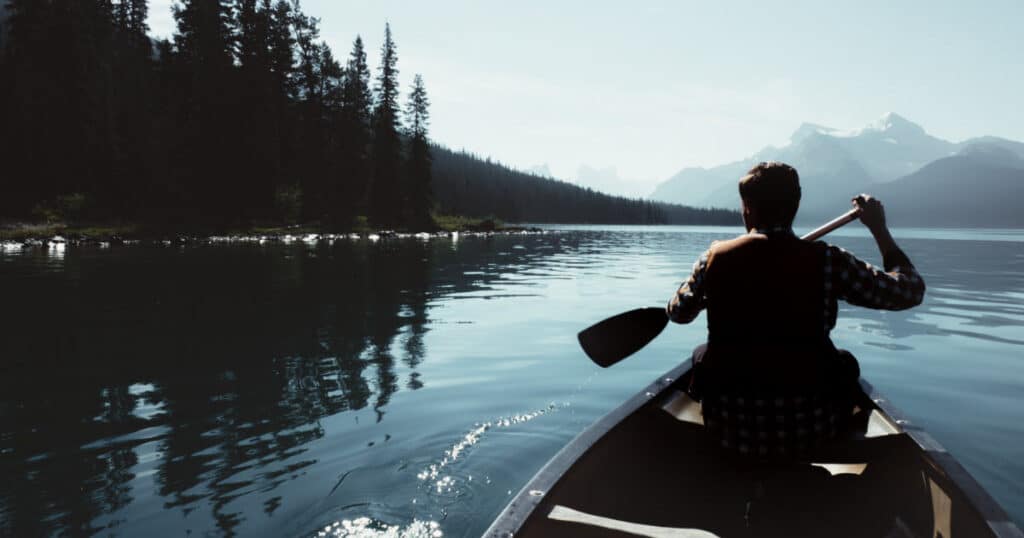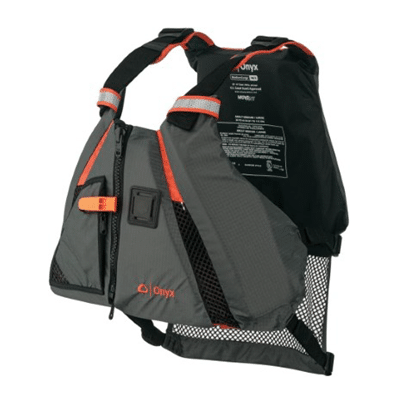If you’re new to canoeing or maybe taking family or friends out on the water for the first time, you’ve got to know how to maximize the stability of your watercraft. If you don’t, you could end up capsizing and if too much water gets in the canoe, it could sink! But how do you make a canoe more stable? I have plenty of experience with this, and I’m going to share what I know here.
Factors that Impact Canoe Stability
There are a variety of things to consider which impact the stability of a canoe. These include the hull shape, width (or beam), and length of the craft. In general wider canoes with a “shallow vee” hull design tend to be more stable than other designs, and to improve the stability of any canoe, you can add an outrigger to one or both sides of your craft.
I’ll explain all aspects of canoe stability in this article, give you my picks for the best canoe outriggers you can buy, and I’ll also give you a quick rundown on how you can DIY a canoe outrigger setup for your boat in this article.
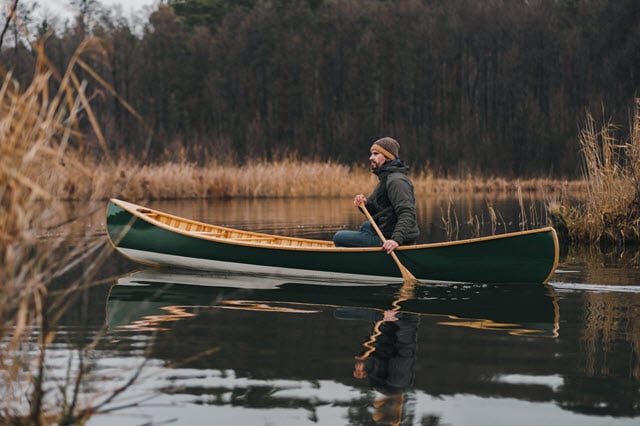
Let’s start with the basics.
Initial Stability vs Final Stability
Initial stability is how stable your canoe is when it’s first on the water and you get into it. Final (sometimes called secondary) stability is how stable the canoe is as it continues on the water, including how resistant it is to capsizing, even when on edge.
When a canoe has good final stability, you’ll find it much easier to keep it upright, even in more challenging waters. Anyone thinking about taking a canoe on whitewater absolutely must have a canoe with outstanding final stability.
If you’re a beginner, you should stay on tranquil waters. In these circumstances, you can go with a canoe with great initial stability but not-so-great final stability.
Of course, you should always wear a PFD (personal floatation device, no matter your level and skill. Sometimes, canoes with great initial stability don’t have great secondary stability. An example is the flat-bottomed canoe.
Or a canoe might have poor initial stability and good secondary stability, like the shallow vee.
Stability in Canoe Design
Canoe design is the most fundamental factor in determining balance and stability. I’ll go over the design features that affect your boat’s stability here, including
- length,
- width, and
- hull design.
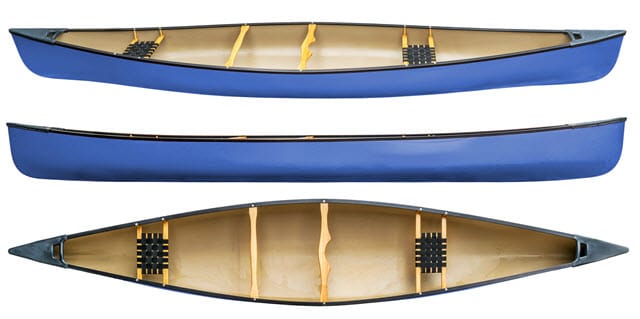
Length
A longer canoe travels further, faster, and straighter. You can also transport more gear in it.
Yet, shorter canoes offer easier turning. And when it comes to tight streams, they’re easier to handle.
They offer better maneuverability overall. But which length is most stable?
Well, that depends on where you’re canoeing. You’ll get better stability from a shorter canoe if you’re in a narrow body of water.
If you have more space or you’re going on a longer excursion, you should go with a longer canoe. Touring canoe trips usually call for a minimum of 17 feet in canoe length.
Width
Canoe width is also referred to as “beam.” To find out a canoe’s width, find its widest point and measure there.
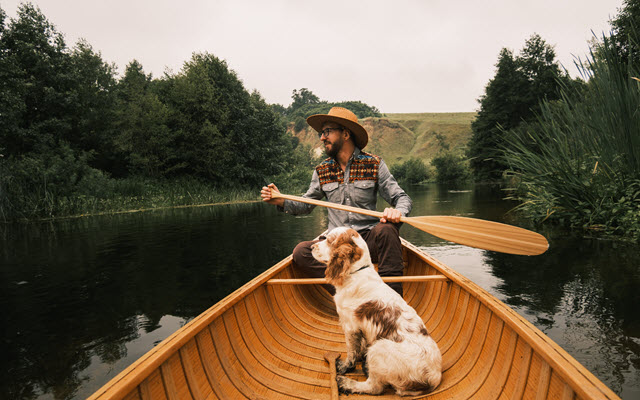
Wide Canoe
A canoe at least 38 inches in width has better initial stability than other widths. But wide canoes take longer to move through the water.
Medium-Width Canoe
A medium-width canoe’s initial stability isn’t quite as good as you get with a wide canoe. For your canoe to be considered medium-width, it’ll need to be between 34 and 37 inches in width.
Narrow Canoe
A narrow canoe has a maximum width of 33 inches. You’ll find this kind of canoe difficult to get into because of its low initial stability.
However, it’s great if you want to move quickly through the water.
Hull (Cross Section) Shapes
Another name we have for the canoe hull is the “cross section.”
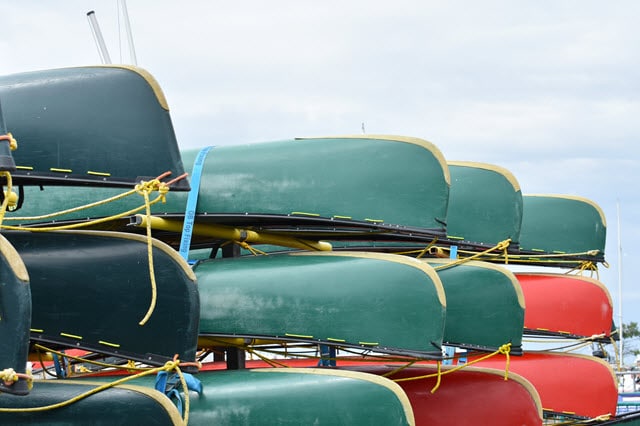
How deep the hull sits lets the canoe withstand waves or spray. There are two types of canoe stability: initial and final stability.
Different Canoe Hull (Cross Section) Shapes
There are three primary canoe hull (cross section) shapes:
- Shallow Vee
- Shallow Arch, and
- Flat Bottom
Shallow Vee
For the most reliable final stability, go with a shallow vee hull (cross section). This hull shape offers the best versatility, but stability can be a little tricky when you first get in the water.
The shallow vee hull shape is also great if you plan on canoeing in challenging waters, and its tracking is superior to other options.
Shallow Arch
While the shallow arch hull doesn’t have as good final stability as a shallow vee, it’s better than a flat bottom. If you have a shallow arch hull canoe, try to have a strong rocker.
Avoid taking a shallow arch canoe into challenging waters, as it probably won’t do as well as you expect.
A shallow arch has a rounded bottom. This type of design has good initial and final stability.
Flat Bottom
A great thing about the flat bottom hull is how stable it is when you first go in the water. However, the final stability isn’t so great.
Also, flat bottom canoes tend usually have a strong structure, so don’t depend on it too much.
A flat-bottomed canoe performs best on still water. They capsize easily in waves.
You’ll find this kind of canoe’s stability degrades if you load a lot of items on it.
When a flat-bottomed canoe leans, one side lifts entirely out of the water, reducing the surface area submerged. This reduces its stability, and the paddlers have to work to prevent it from tipping entirely.
| Initial Stability | Final Stability | |
| Shallow Vee | Poor initial stability | Good final stability |
| Shallow Arch | Decent initial stability | Decent final stability |
| Flat Bottom | Excellent initial stability | Poor final stability |
You should also learn about the other parts of a canoe. I wrote a helpful article about this, so make sure to check it out.
Why is Canoe Stability Important?
Well, it’s important because you don’t want to end up capsizing. That means your canoe tipping over (making you fall in the water).
In some settings, this could be dangerous.
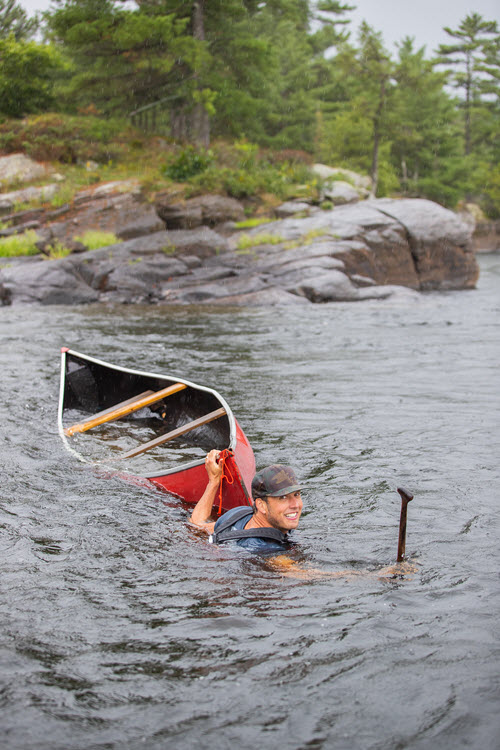
Do you go canoeing in rough water? You’re at a much higher risk of capsizing if you don’t have an outrigger.
If you have children or a dog with you that create a lot of movement in the boat, an outrigger is even more important.
When compared to other kinds of boats, canoes tend to be unstable. That’s especially true when you first try to step into them.
But your canoe needs enough stability that you won’t end up falling in the water and you can start paddling and create better final stability.
I’ve already talked about how a canoe’s features can make it more or less stable, so you can keep that in mind when you go to buy your boat. But what if you already have a canoe? Don’t worry!
There’s no need to go to the expense of buying a new water vessel.
Add an outrigger to it, instead.
How to Make a Canoe More Stable with an Outrigger
An outrigger is what you need to optimize your canoe’s stability and prevent it tipping over.
But first let’s learn: what’s an outrigger?
What is an Outrigger?
Okay, I know what you’re thinking. Seriously, you’ve just started out with canoeing and there’s something else to learn?
Don’t worry. Outriggers are simple, have been used to stabilize boats in rough waters for hundreds of years, and if you want, you can even try installing one yourself.
So, what is an outrigger?
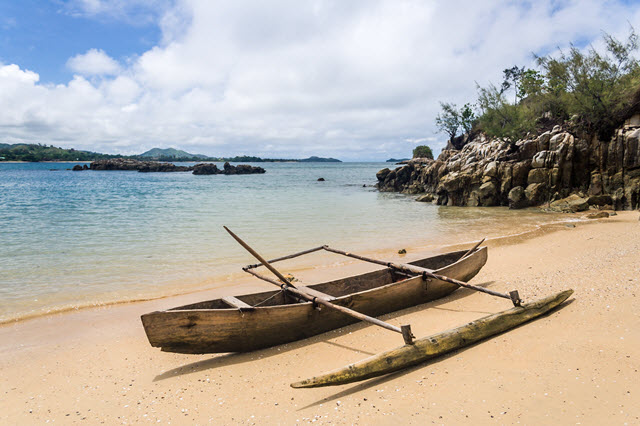
An outrigger is a crossbar with floats on either side that hang over the canoe’s edges. They provide extra weight distribution over a larger surface area to stabilize the canoe.
The floats act like training wheels on a bicycle and make it more difficult for the canoe to tip over. These are extra useful when you’re in open waters or if you need to steady your canoe while fishing.
If you want an outrigger, you have two options. You can buy one or you can build one yourself.
Buying an Outrigger
This is the easiest option. There are several options on the market, but my favorite is the Spring Creek Manufacturing Canoe Stabilizer.
It usually sells in the $350-$375 range, and it’s easy to install with a set of clamps.
You can extend this outrigger up to 20-inches in each direction, and it features 5-pound floats that support up to 27-pound buoyancy. The floats have a hydrodynamic design, so you get a better glide through the water (which is important). Rugged Outdoors Guide has a great YouTube review where you can see this product in action:
Want something a little more affordable–and portable? I recommend the one made by Brocraft (Amazon link) which generally sells for under $250. It has a molded PVC float on a 32-inch long aluminum arm.
How to Make a Canoe More Stable by Building Your Own Outrigger
If you’re handy, you can build your own outrigger instead of paying for one.
They’re pretty simple to make. And yes, I’ve done it myself. It took a little bit of time but it was well worth the effort.
And building it yourself means you can customize or modify it to fit your canoe.
Here’s what you’ll need:
- A wood beam two feet longer than the width of your canoe
- A clamp
- A section of PVC pipe
- A bolt or D-saddle clip
- A 90-degree pipe connector
- A T-connector
- Crab floats
- Heavy-duty glue (water-safe grade)
And here are the steps to follow to build your own canoe outrigger!
1. Secure the wood crossbar.
Get a wood beam that measures two feet longer than the width of your canoe. This way, when it’s assembled, your outrigger will extend a foot from either side of your canoe.
That’s exactly what you want. Secure the wood crossbar to both sides of the gunwale via a clamp or screws.
2. Attach the PVC pipe and 90-degree pipe connector.
Take a section of PVC pipe and place it over the wood extending off the sides of the canoe. Secure it into place using a D-saddle clip or a bolt.
The pipe and wood will strengthen each other and prevent it from flexing on the water. Then attach a 90-degree pipe connector at the PVC pipes and use a T-connector to attach ¾-inch PVC pipes to either end so that they run parallel to the boat.
3. Attach the crab floats.
The frame is now ready to attach crab floats onto either side. Attach the floats onto the pipe and either bolt them into place or use heavy-duty water-safe glue.
Let the glue dry and your outrigger should be ready for use.
Make absolutely certain that the outrigger is secured strongly to your canoe and that the floats are attached to the pipe.
There’s a lot of different methods you can DIY a canoe outrigger, and if you’re looking for a more step-by-step how-to guide that goes in-depth and takes you through every stage of the process, I recommend the one Big Guy DIY created on YouTube. It’s a great tutorial:
And remember, always wear a PFD (personal floatation device) when you’re canoeing. This is especially important when you’re using a DIY outrigger.
Now You Know How to Make a Canoe More Stable
Now you know how to make a canoe more stable, but it’s important to remember that even with improved stability, any boat can tip and capsize. Make sure you’re using common sense on the water. Wear your life preserver, and understand what to do if you swamp your canoe.
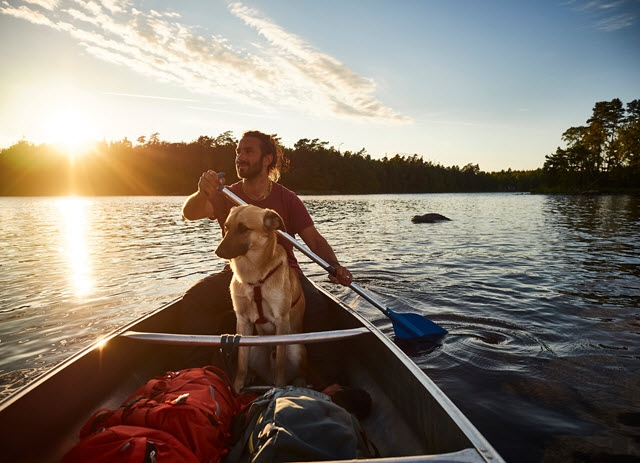
No matter what kind of canoe you have, it’s best to add an outrigger to improve stability. This is especially true if you do a lot of hunting or fishing from your canoe.
So, here’s a quick review of the tips I’ve given you here.
- A canoe’s initial stability and final stability are different.
- There’s often a trade-off between initial stability and final stability.
- No matter what kind of canoe you have, you can get more stability and stay safer by adding an outrigger.
- Always wear a PFD (personal floatation device) in the canoe.
Have a fantastic time out on the water in your canoe! And make sure you wear the right clothes. You can learn my tips for dressing appropriately for a canoe outing right here.

